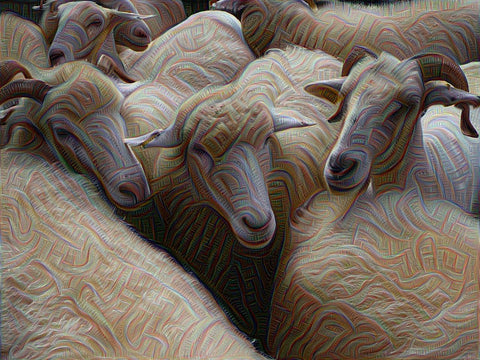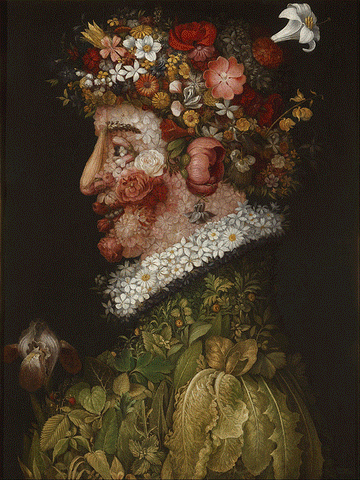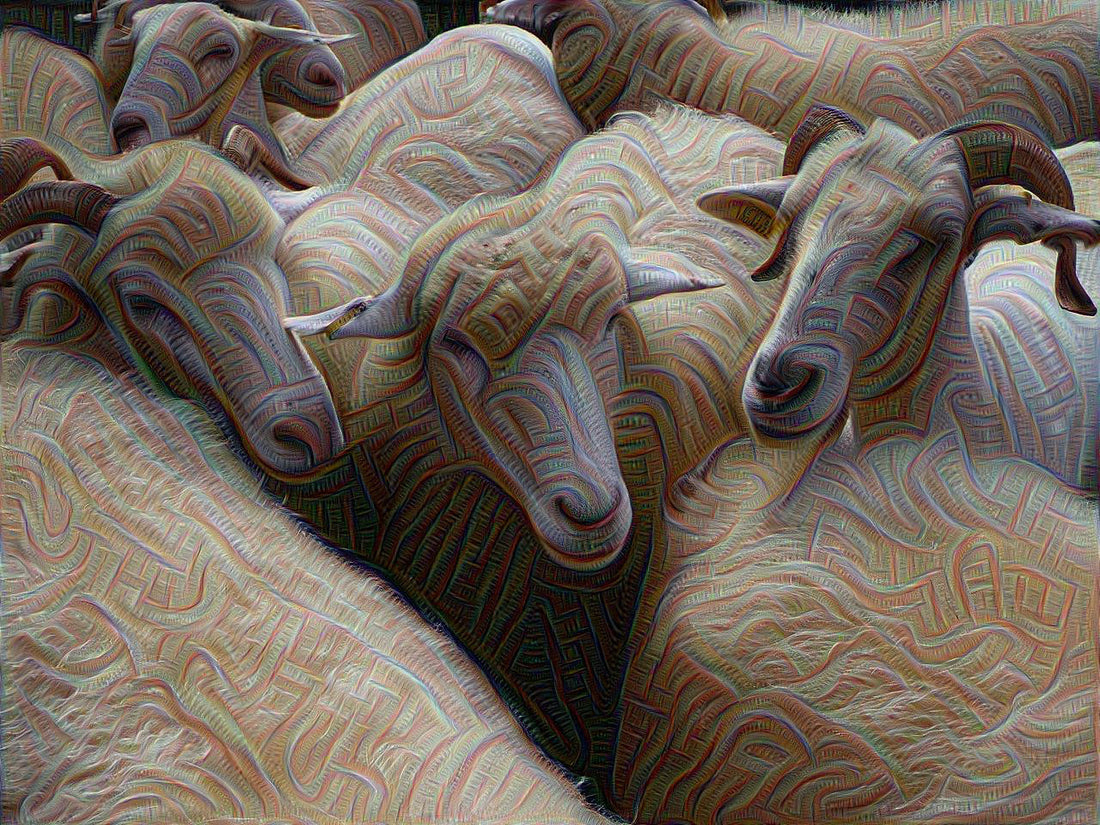
Right now I'm working on a zine about deep dream technology, and how artists can use this technology in mixed media projects, photography, videos, music, collage, and any other artistic medium you can think of. I'd like to get in touch with any artists who use deep dream processing methods in their art.
Anyone who has used deep dream in an artistic project, e.g. a collage, a video, an audio track, or just creating an image with deepdream for their computer wallpaper, is welcome to submit their work. Essays are also welcome (1500 words max). If you want to write a little bit about your experiences, or just submit some images, you can do that via the Calhoun Press contact page or via Instagram or Twitter.
The deadline for submissions is November 26th, 2015 (Thanksgiving).
What is a "deep dream"?

"Deep Dream of Electric Sheep." From an image by 3268zauber, CC-BY-SA.
"Deep dream" images are made by artificial neural networks (a kind of computer program) that seek out and enhance patterns that they "see" in images.
Google uses artificial neural networks to find and sort images on the web. For example, whenever someone searches "sheep," they will get pictures of sheep, not goats or bushes or corgis or anything else, because of these networks.
Google also uses the surrounding text on a webpage to sort images, but that's not enough. For example, a page on sheep herding might feature pictures of sheep in a field, a border collie, a shepherd, and a picture of the author of the post. Artificial neural networks allow Google to discriminate between a picture of an eggplant and a picture of a human face.
How does the network know what a sheep looks like? Basically, the network is fed thousands of images of sheep and then looks for commonalities between the images. Each layer of the neural network looks for different things; the shallower layers look for patterns of light and shadow, while deeper layers look for shapes and more complex visual structures.
A few engineers at Google discovered that these artificial neural networks could not only recognize images, they could also generate them. If Google gave these networks an image of random noise, and then told the network to look for and amplify the sheep-like patterns in the image, these engineers could see what the network had identified as the defining visual characteristics of sheep. This process would allow the engineers to understand how the neural networks were processing images, and what each layer was "seeing."
The resulting pictures, called "deep dreams" by Google, looked a lot like the visual hallucinations of people on psychedelic drugs. Is that a coincidence, or are artificial neural networks giving us insight into how vision is processed in the human brain? It's too early to say, but computer and cognitive science can now "see what the machine sees." Where it goes from there is beyond my paygrade, but it's always interesting to see what happens next in this field.
How can I make deep dream images?

There are many different computer programs, mobile apps and websites that can generate deep dream images. Here's a list of the ones I've used.
- Deep Dreamer - a computer program (Mac) that can make deepdream photos and videos. I used Deep Dreamer to make all the images in this post. It costs $14.99 but it's worth it if you're going to do a lot of intensive deep dream projects (e.g. music video sequences, art projects) and you don't have a lot of programming experience.
- Dreamception - this is a mobile app that lets you create ten free deep dream images per day. It's available for iPhone and Android, but I've only used it on my Android phone. I haven't used it that much, but some people might dislike the "freemium" aspect of the app (you have to pay for certain features, e.g. unlimited image creation).
- Deep Dream Generator - a fast and free web-based deep-dream creator, your photo is ready in about 20 seconds. You can't customize or mess with the parameters though, and you only get one image.
- Dream Deeply - another free web-based deep dream creator. This deep dreamer has a queue so it can take a couple of hours for them to get to your image, depending on how many people are in the queue.
- Deepdreamer.io - similar to Dream Deeply, but their queues are generally shorter; I've only had to wait about twenty minutes to get the finished images.
If you have programming experience, this guide on /r/deepdreams will show you how to create a deep dream engine of your own.
Anyone who's made deep dream images is welcome to submit to the zine. The best way to submit your images is to upload them to imgur (or your own personal website) and then send me a link through the Calhoun Press contact page. If you have an essay or article about deep dreams please get in touch as well. Remember there's a 1500 word maximum for essays and articles.
